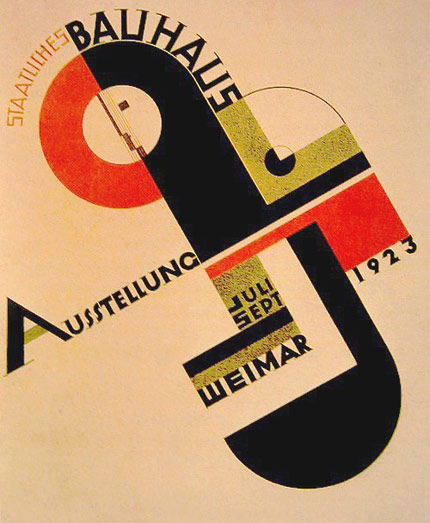 |
| Ausstellung Weimar |
Bauhaus Film Task
In our lecture we were presented with a short film covering Bauhaus and its endeavors. We were then given various questions to answer based on the film.Which key ideas constituted the Bauhaus philosophy?
The Bauhaus' place in history is owed to its successful efforts of preventing art from losing its stature in society. The method of doing this, in a rounded up description, was through reuniting creativity with the manufacturing world. They gained major inspiration from Modernism and the fluctuating society; enabling them to stay steadily along the path of the social trends of the time. The artistic giants used the concept of universal visual language in order to allow it to be accessible to nearly everyone (in this time period many people were illiterate), teaching the principles of Modernism to be able to be applied to all forms of art and design to collaborate and create. Bauhaus' relentless ideology of experimentation drove them to constantly be getting a name for creating interesting and innovative work. Often using geometric shapes and primary colours in their work on mixed media they attempted to show the link between their world and the new more structured technological world.Collaborating with Wim Crouwel they were able to teach students about the theories of the grid structure, building the ideology of work having a foundation of structure and a minimalistic style, rather than the traditional free and flowing artwork of the time. Bauahus developed on top of Modernism with other influences from such movements as cubism, constructivism, etc. They often declared how their works was based more so on the principles of engineering than of art.
In what ways were these ideas innovative or new?
Rather than sticking to the traditional forms of art and design, Bauhaus decided to experiment with new materials and mixed media, taking heavy inspiration from Modernism, which was strongly linked with the new industrial focused society. Modernistic artists such as Kandinsky were creating inspiring original pieces of work of which screamed tones of the old ideologies being rejected and the new ideologies of what the artist felt directly coming in. The overseers at the Bauhaus would encourage would strongly encourage the use of experimentation and ever fluctuating methods. For example, in the instance of photography, the subject would then not be looked at just as a mere photograph but as a means of visual communication, later developing into the process of 'photomontage'. The 'Metallic Festival' was created and its intentions were of a modern aesthetic, of which is successfully accomplished; influencing many artists into creating work strongly connected to the industrial focused society.How was art education revolutionized under Bauhaus principles?
In the midst of 1919, Bauhaus remained the only school of art in the entirety of Germany. For the whole of the first six months of the course it offered, students would be taught abstract theories and a multiple of techniques and styles. For example, students would be allocated the task of collecting metal debris and discovering what elements and materials were used to create them, then experiment with these new materials. It was only when Bauhaus was created when the new 'Modernist' student was created, before this the conformist art student typically would be traditional, focusing on landscapes, portraits, actual physical things.
Do any of the principles resonate with you and your studio practice? If so, which ones and why?
In my humble opinion, I believe elements of the Bauhaus theology and ideology is present in the structure of our work to this very day. For example, in a lot of areas of our studio practise we are advised to use grid structures in the layout of our work which allows the work to be more clear, sophisticated, and professional. The software 'InDesign' allows this structured layout method to be used, reflecting Bauhaus' principles.


No comments:
Post a Comment